Best eSIM for Germany: Plans, Pricing & Setup (2025 Edition)
Luis Rafael•Jul 18, 2025
Traveling to Germany is an amazing experience, with everything from Berlin’s rich history to beautiful castles in Bavaria. To make your trip easier, you’ll need mobile data to use public transport, book attractions like the Reichstag, or share photos from places like Neuschwanstein Castle.
An eSIM makes staying connected simple. This guide will explain what an eSIM is, how to choose the right one for Germany, and how to set it up on your phone so you can travel without stress.
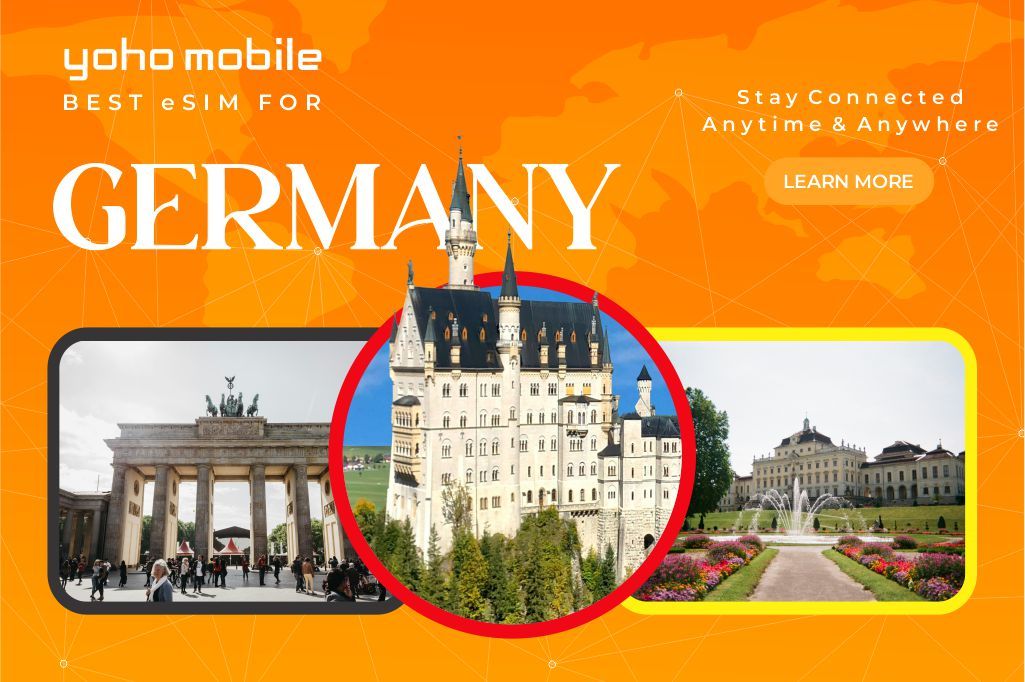
Pictures by Marius Serban, Yang Yang and Jasmine Hana Otto on Unsplash
What is an eSIM and How Does it Work?
An eSIM (or embedded SIM) is a small, digital chip that is already built into your smartphone. It functions just like a traditional SIM card but without the physical component. Think of it as a programmable SIM that you can activate remotely. You can purchase and activate a data plan online in minutes, often by simply scanning a QR code with your phone’s camera.
For your trip to Germany, this means you can land at Frankfurt Airport, connect to the airport’s Wi-Fi, activate your eSIM, and be online with a local data plan before you even collect your luggage. It’s convenient, fast, and lets you start your adventure right away.
How to Choose the Best eSIM for Germany
Selecting the right eSIM is key to a smooth travel experience. A good choice will save you money and ensure you have a strong connection when you need it most. To find the best eSIM for Germany, consider these important factors.
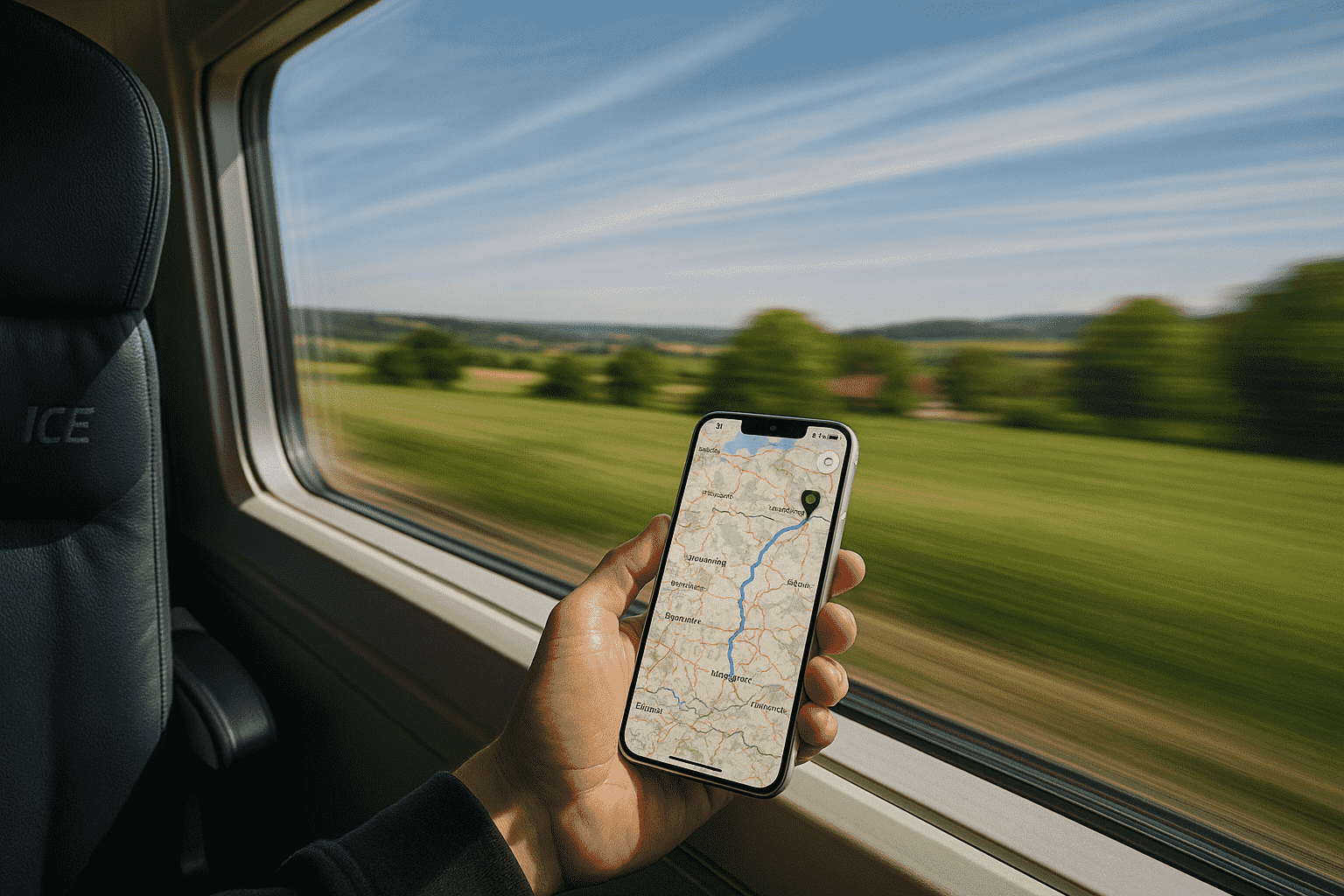
Is Coverage Guaranteed on Your Journey?
Germany is a large and geographically diverse country. While you can expect fantastic coverage in bustling cities like Berlin, Munich, Hamburg, and Cologne, the signal can vary once you head into more rural areas.
If your itinerary includes exploring the enchanting trails of the Black Forest or hiking in the Bavarian Alps, you need an eSIM that uses a reliable local network. The top mobile operators in Germany are Deutsche Telekom (T-Mobile), Vodafone, and O2. An eSIM provider that partners with one or more of these networks will give you the best and most extensive coverage, ensuring you don’t lose your signal when you’re navigating winding country roads or sharing that perfect castle photo.
What’s Your Data Requirement?
Your ideal data plan depends entirely on your habits. Here’s a breakdown to help you decide:
-
Light User (1GB - 3GB per week): This is for you if you primarily need data for essentials. Using Google Maps for directions, checking train schedules on the DB Navigator app, or sending messages via WhatsApp.
-
Medium User (5GB - 10GB for a two-week trip): This is the sweet spot for most travelers. This amount covers all the basics, plus daily social media updates, streaming music, and making a few video calls to family back home.
-
Heavy User (20GB or Unlimited): If you’re a digital nomad, a content creator uploading high-resolution videos, or someone who plans to stream Netflix or YouTube to unwind in your hotel each night, a large or unlimited plan is the way to go.
Helpful Tip: Don’t stress too much about getting the exact amount. Most top eSIM providers allow you to easily top up your data through their app if you find yourself running low.
Duration of Your Stay
eSIM plans are designed with different validity periods to match your travel schedule.
-
Short Trips (Up to 7 days): If you’re in Germany for a long weekend or a short city break, a weekly plan is perfect.
-
Longer Stays (Two weeks to a month): For extended holidays, larger data bundles (like 10GB, 20GB, or unlimited plans) offer much better value since the cost per gigabyte is usually lower.
-
Multi-Country European Tour: If Germany is just one stop on a larger European adventure, consider a regional eSIM. This allows you to use a single plan across multiple countries (e.g., Germany, Austria, France).
Want Voice and Messages, or Just Internet?
The vast majority of travel eSIMs for Germany are data-only. This is because most travelers communicate using internet-based apps. With a solid data connection, you can use WhatsApp, FaceTime, Telegram, or Skype to make calls and send messages to anyone in the world.
However, if you anticipate needing to make traditional phone calls—for instance, to book a local restaurant that doesn’t take online reservations or to contact your Airbnb host—some providers do offer plans that include a European phone number and a bundle of call minutes and SMS texts. Always check the plan’s description carefully to see if these features are included.
Need for Hotspot Capability?
A mobile hotspot, also known as tethering, allows you to share your phone’s internet connection with other devices, like a laptop, tablet, or a travel partner’s phone. This feature is incredibly useful, but is not supported by all eSIM plans.
If you’re a remote worker who needs to connect your laptop from a café in Berlin, or if you’re traveling with family and want to share one data plan among multiple devices, ensuring your eSIM allows tethering is crucial. Double-check this feature before you purchase to avoid any unwelcome surprises.
Pricing
The price of an eSIM for Germany varies depending on how much data you need and how you plan to use it. If you’re on a tight budget and mostly using free Wi-Fi, you can get a small data plan for just a few dollars to cover basic needs or emergencies.
For most travelers, the best option is a mid-range plan that offers a good amount of data on a reliable network like Telekom or Vodafone, giving you solid coverage at a reasonable price. If you use a lot of data or want a hassle-free experience, there are premium plans with unlimited data. These cost more but are great for business travelers or anyone who doesn’t want to worry about running out of data.
Best eSIM Providers for Germany in 2025
Your best option will depend on your budget, how much data you need, and your specific travel plans. To help you make an informed decision, here’s a more detailed look at some of the top providers for Germany in 2025.
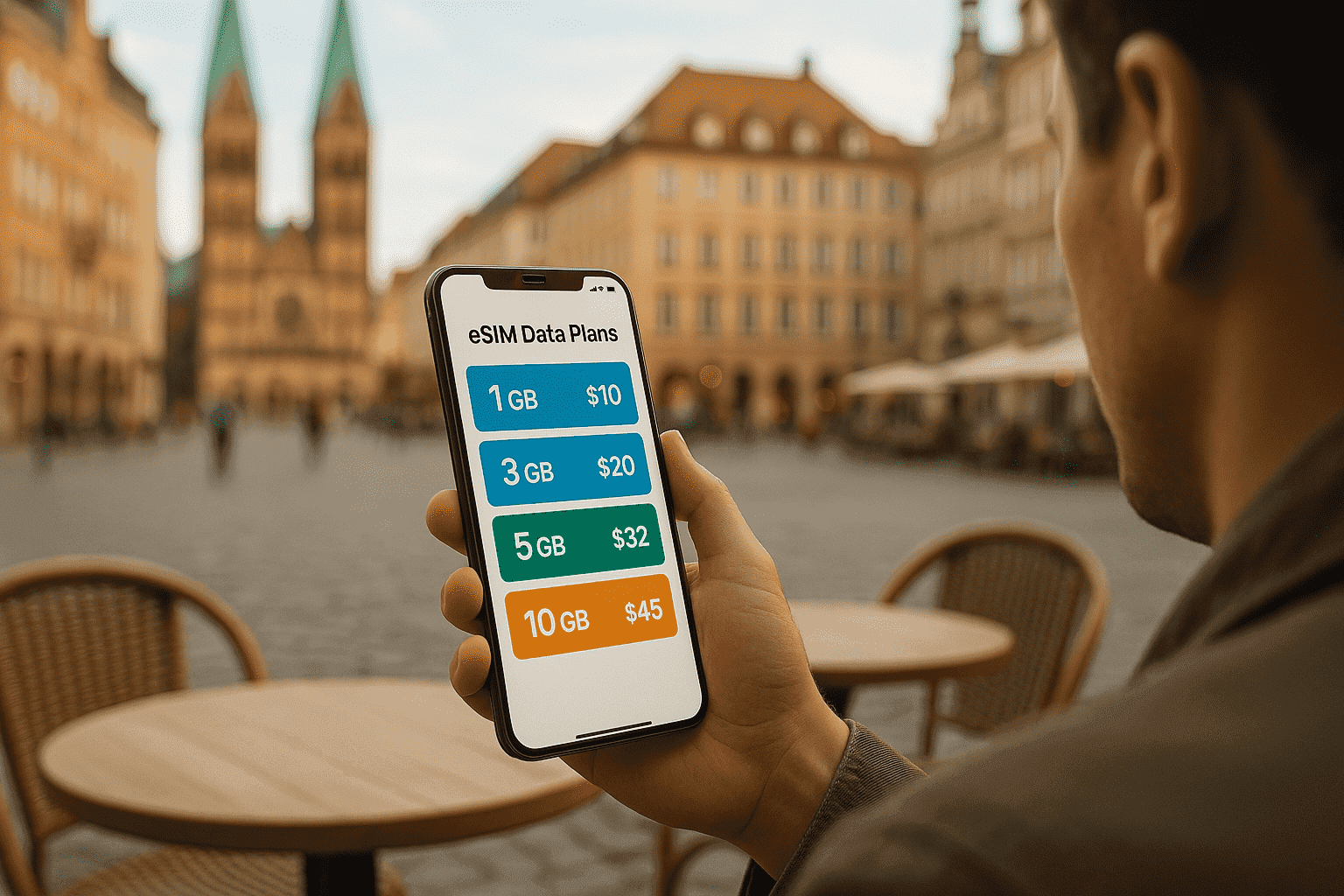
Yoho Mobile
Yoho Mobile establishes itself as a leading contender for travelers heading to Germany, especially for those who value flexibility and great value. Their main strength lies in offering fully customizable eSIM plans. Instead of being locked into predefined packages, you can select the exact number of days and the specific amount of data you need, ensuring you only pay for what you’ll actually use. For instance, you can often find a practical plan like 3GB for 7 days costing around $3.49, making it a great value option.
They partner with top-tier local networks to provide robust and speedy 4G and 5G coverage across the country. Key features that enhance the user experience include 24/7 customer support available in multiple languages, an intuitive app for both iOS and Android, and a wide array of payment methods. All their plans for Germany support hotspot tethering, making it easy to share your connection with other devices.
Flexiroam
Flexiroam is an excellent choice for globetrotters, particularly if your trip to Germany is part of a larger European or worldwide itinerary. They specialize in regional and global eSIM plans that keep you connected across multiple countries with a single purchase. To give you an idea of their pricing, a 10GB data plan valid for 3 days in Germany can cost around $9.99.
In Germany, they provide reliable 4G and sometimes 5G service, and most of their plans permit hotspot sharing, which is a significant plus. This global convenience is, however, reflected in their pricing; travelers who are only visiting Germany might find that their plans are more expensive than some country-specific alternatives. While they offer multiple channels for customer support, response times can occasionally be slower during peak periods.
Jetpac
Jetpac is a go-to provider for budget-conscious travelers who appreciate simplicity and straightforward pricing. They offer a selection of affordable data packs with reliable 4G connectivity throughout Germany, making them ideal for shorter trips or for users with moderate data needs. As a practical example, Jetpac frequently offers plans like 3GB of data for 7 days at a price of about $8.00. Hotspot functionality is generally included, allowing you to share your internet connection.
Jetpac is a solid choice if you primarily need data for maps, messaging, and some light browsing. However, for digital nomads or heavy data users, the absence of any unlimited data plans can be a significant drawback, as their packages are geared towards specific data allowances. Their customer support is helpful, though it’s worth noting that it operates primarily during standard business hours.
Saily
Saily has gained popularity among tourists for its affordable eSIMs and exceptionally easy setup process, which is managed entirely through its dedicated app. They provide strong 4G network coverage in Germany, and their plans typically come with hotspot capability included. For example, you might find a popular tourist plan offering 3GB of data for a month at approximately $8.99.
The app-first approach makes activation and management very streamlined, perfect for those who want a no-fuss experience. While the platform is user-friendly, the range of available plans is somewhat restricted, which might limit options for travelers who need very specific data amounts or longer validity periods. For customer support, it’s good according to user reports.
Airhub
Airhub operates as an eSIM marketplace, offering a vast catalog of plans from various network partners. This gives you a wide selection of options for Germany, including regional plans that cover Europe and beyond. They provide access to both 4G and 5G networks, and hotspot sharing is generally permitted on their plans. To illustrate their offerings, you could select an unlimited data plan for 5 days that costs around $13.90.
The advantage of a marketplace is choice, but the plans themselves are often sold in predefined packages of data and validity. This structure offers less room for customization compared to building your own plan, so you might end up buying more data than you need. It’s also worth noting that a small convenience fee is typically added to your purchase by their payment partner at checkout. Customer support is readily available through live chat and email.
How to Buy & Activate an eSIM for Germany
Getting your eSIM for Germany is a simple process. Just follow these easy steps to get online in minutes.
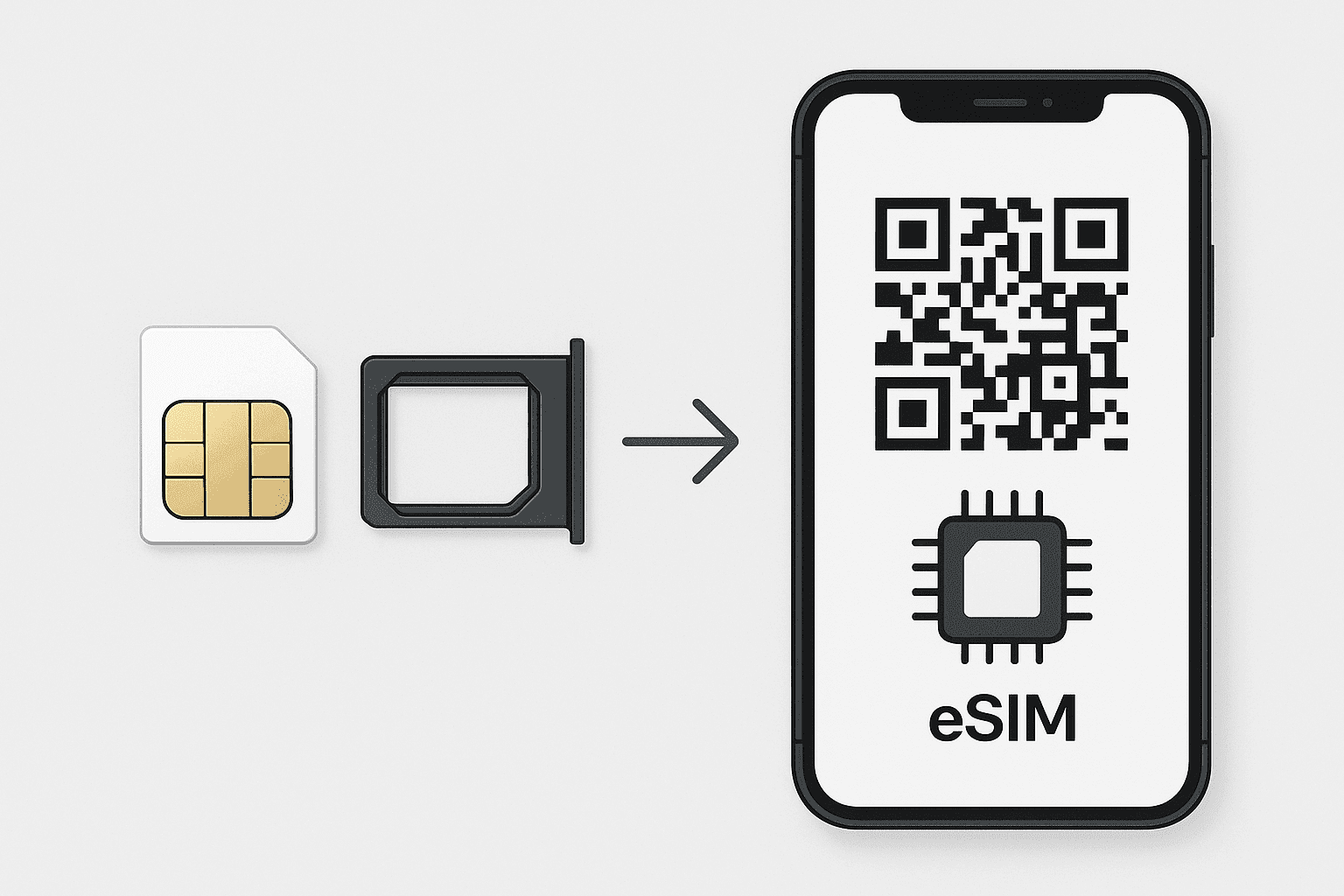
Step 1: Check if Your Phone is Ready
First things first, you need to make sure your smartphone is compatible with eSIM technology. Most modern phones are, but it’s always best to check. Yoho Mobile is a great choice, offering excellent coverage throughout Germany.
Step 2: Visit the Yoho Mobile Store
Next, head over to the Yoho Mobile website on your computer or download the Yoho app directly from the App Store. This is where you’ll browse and purchase your plan.
Step 3: Select Your Destination
In the store or app, choose Germany as your destination. If your European adventure includes other countries, like France or Austria, you can select a regional plan. This lets you use a single eSIM for your entire trip.
Step 4: Pick the Perfect Plan for Your Trip
Now, customize a plan that matches your travel style. Here are a few ideas:
- Short Weekend Trips: A 3GB plan is usually perfect for navigating cities and sending messages.
- Week-Long Stays: If you’ll be sharing photos and streaming music, consider a 10GB plan or an unlimited option for peace of mind.
- Business or Heavy Use: For constant connectivity for work or streaming, an unlimited data plan is your best bet.
Step 5: Purchase Your eSIM
Before you make a purchase, take advantage of Yoho Mobile’s free eSIM trial. It’s a great way to test the service before committing to a plan.
To complete your purchase:
- Enter your email address, as this is where your confirmation and eSIM details will be sent.
- Don’t forget to save some money! Use the promo code YOHO12 for a 12% discount on your order.
- Select your preferred payment method, like a credit card or another option, and enter your details to finalize the purchase.
Step 6: Install and Activate Your eSIM
After purchasing, you will receive a QR code to activate your eSIM. You can set it up right away by scanning the code, or you can wait until you arrive in Germany. For the best experience, activate it once you land so your plan starts exactly when you need it.
If you’re interested in more details, you can also learn how to create your own personalized eSIM plan for total control.
Final Thoughts: Is an eSIM Worth It in Germany?
Getting an eSIM for your trip to Germany is a smart and easy way to stay connected. It lets you use data without needing Wi-Fi, so you can explore places like Berlin or the Black Forest without any hassle. You’ll be able to navigate, share photos, and keep in touch with people back home. It’s a simple tool that makes traveling less stressful and more enjoyable.
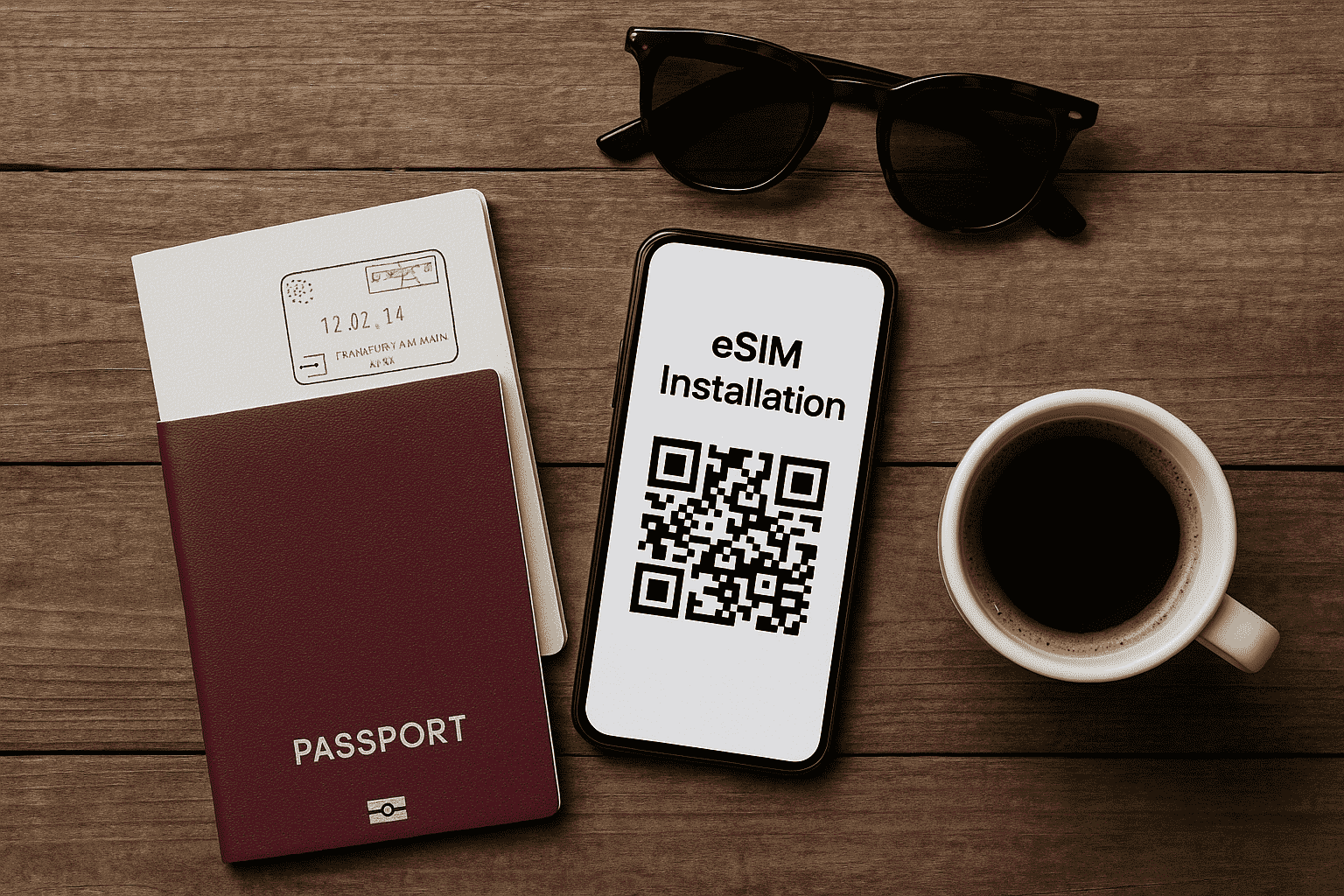
FAQs About Using an eSIM in Germany
How much data do I need for my trip to Germany?
Your data needs depend on your travel style. For simple use like maps and messaging, 3GB to 5GB for a week is perfect. If you plan on sharing photos or video calling, consider 10GB to 15GB for a couple of weeks. For heavy use like remote work or streaming, an unlimited plan is your best bet.
Does Germany support eSIM?
Absolutely! Germany is very well-equipped for eSIM technology. The country’s major mobile networks, including Deutsche Telekom (T-Mobile), Vodafone, and O2, provide a strong backbone for excellent eSIM coverage.
Can I make calls and send texts with a German eSIM?
Typically, eSIMs for travelers in Germany are designed for data-only. For making calls and sending messages, you’ll generally use internet-based apps like WhatsApp, Messenger, or Skype, which use your data allowance. However, a few providers do offer special packages that come with a local European phone number for traditional calls and SMS. For more details, you can check this guide.
What is the best eSIM for Germany?
There’s no one-size-fits-all “best” eSIM, but Yoho Mobile is a great option for travelers who want flexible plans and good prices while in Germany.
